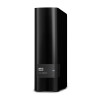Western Digital easystore Desktop User Manual - Page 21
Safely Disconnecting the Drive, Erasing the Drive, Using the Drive Erase Function
 |
View all Western Digital easystore Desktop manuals
Add to My Manuals
Save this manual to your list of manuals |
Page 21 highlights
Managing and Customizing the Drive 1. Click Start > All Programs > Western Digital > WD Apps > WD Drive Utilities to display the WD Drive Utilities screen, Diagnose dialog. 2. If you have more than one supported drive connected to your computer, select the one that you want to check. 3. On the Diagnose dialog, click the button for the test that you want to run: ▪ Run Drive Status Check ▪ Run Quick Drive Test ▪ Run Complete Drive Test Safely Disconnecting the Drive Windows and Macintosh operating systems have a means for safely disconnecting and removing the drive without turning off the system: ▪ Windows has a Safely Remove Hardware and Eject Media icon in the system tray which, when used, ensures that all data is flushed from system cache before device removal. ▪ Mac users can simply drag the drive icon to the trash before disconnecting it. Due to the exFAT format of the drive, special care should be taken to follow the steps listed above when disconnecting the drive. Failure to do so may result in data corruption. Erasing the Drive Note: Erasing your drive also deletes the WD software and all of the support files and utilities. You can download these to restore your drive to its original configuration after erasing it. Using the Drive Erase Function To erase your drive when it is not locked: 1. Open the WD Drive Utilities software by clicking either: ▪ The WD Drive Utilities desktop shortcut icon ▪ Start > All Programs > Western Digital > WD Apps > WD Drive Utilities 2. If you have more than one supported device connected to your computer, select the one that you want to erase. 3. On the WD Drive Utilities screen, click Drive Erase to display the drive erase dialog: easystore 17 User Manual















